DevOps is provided as a service to many businesses in order to help them facilitate the development process and achieve faster software delivery. DevOps is the key to automation. It integrates numerous siloed departments that are involved in software development, makes their collaboration smoother and reduces time to market. Thanks to DevOps infrastructure automation, users get 24/7 access to applications and, consequently, become more devoted to the developer. What are the best DevOps tools? Read on to learn.
Make SaM Solutions your DevOps services provider – and enjoy faster time to market and lower release costs.
It is highly important to choose the right tool for the right job. But you can easily get lost in the dozens of available options. Moreover, there is no single tool that may fit all of your requirements, which is why it is necessary to prepare a tailor-made toolkit for your infrastructure. To assist you with this task, we offer a DevOps tools list.
1. Jenkins

Jenkins is the leading DevOps tool for monitoring the performance of repetitive tasks. This is a Java-based program for continuous integration, often used for software development and testing.
Main features:
- Ready to run out-of-the-box
- Continuous integration (CI) and continuous delivery (CD) solution
- Packages for Windows, Mac OS X and other Unix-like operating systems
- On-the-fly error checks (continuous testing)
- Built-in help
- Can integrate with almost every tool due to hundreds of plugins and add-ons in the Update Center
- Can place a large number of projects or create different environments
- Provides security
Disadvantages:
- Doesn’t provide proper analytics
- Hard to track changes made by other team members
- Does not provide an agile framework to manage different sandboxes
Pricing: Free
2. Vagrant

One of the best infrastructure automation tools, Vagrant helps build, configure and manage lightweight virtual machine environments. A created VM can be easily reproduced and shared with other developers, so every team member has identical development environments. Vagrant focuses on automation, lowers setup time and increases equality among developers.
Main features:
- Runs on top solutions such as VirtualBox, VMware, Hyper-V etc.
- Creates portable work environments
- The setup process is not complicated (installed on Mac OS X, Windows, Linux)
- Has plugins for cloud provisioning, configuration management tools Chef and Puppet
- Makes it possible to track revisions and to go back to an older revision if necessary
Disadvantages:
- Need a powerful PC to run
- Easy to use, but difficult to understand and master
Pricing: Free
3. Visual Studio IDE

Visual Studio is an integrated development environment (IDE) from Microsoft. Among DevOps orchestration tools, Visual Studio proposes a full set of features to create apps for Android, iOS, web and cloud. Its goal is to provide a variety of tools to all developers working on any platform. Visual Studio uses Microsoft software development platforms such as Windows API, Windows Forms, Windows Presentation Foundation, Windows Store and Microsoft Silverlight. It can produce both native and managed code.
There are five versions of VS for different customers: Visual Studio Community, Visual Studio Professional, Visual Studio Enterprise, Visual Studio Test Professional and MSDN Platforms.
Main features:
- Provides a rich selection of development languages (Visual Basic, C#, PHP, Objective-C, JavaScript and Visual C++); the API foundation is called the .NET Framework; provides support for language interoperability
- Easily zooms into details such as call structure, related functions, check-ins and test status
- Allows you to develop and deploy the SQL Server and Azure SQL databases with ease
- Includes a code editor that supports syntax highlighting and code completion
- Includes a debugger that works both as a source-level and as a machine-level debugger
- Includes a host of visual designers to aid in the development of applications
- Allows developers to write extensions for Visual Studio to extend its functionality
Pricing:
- Free (for students and individual developers)
- Contact sales for more information
4. Apache
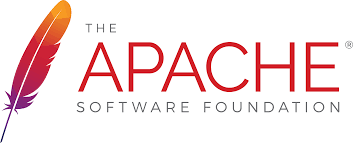
Apache Active MQ is a mighty open-source web server developed by the Apache Software Foundation. It is fast, supports several cross-language clients and protocols, and includes easy-to-use enterprise integration patterns.
Main features:
- Compatible with numerous hardware configurations and operating systems (runs on Linux, Windows NT, MacOS, Unix etc.)
- Supports such programming languages as PHP, Perl, Python, C, C++, C#, Java, along with SSL and TSL encryption for websites
- Includes an administration control panel, customizable error messages and authentication schemes
- There are numerous third-party add-ons you can install to customize your web server
- Allows to make personal modifications in the configuration to suit the technical capabilities of your hardware
- Supports advanced features (message groups, virtual destinations, wildcards, composite destinations)
- Technical support resources are available on multiple websites around the world
- Frequent updates
Disadvantages:
- Security is a great issue, as personal modifications are allowed
Pricing: Free
5. Docker

Docker is a containerization platform that enables to execute many applications on one server without having an impact on each other (and Kubernetes is a container orchestrator for platforms of this kind). It is possible due to isolated containers. Each container is some kind of a separate hardware setup to perform an application as it is done on a server.
Main features:
- Allows to quickly assemble applications from components
- Allows to optimize resources and provide high availability
- Reduces conflicts
- Enhances security (as all containers are isolated, have their own environment and don’t share resources; if a crash happens to one container, others remain safe)
- Works with any stack
- Simplified configuration (it doesn’t need a whole operating system as virtual machines do)
- Provides a consistent environment for code management that makes the process of development and deployment easier and faster
Disadvantages:
- Some apps cannot be properly deployed in containers, so Docker is not able to completely replace VMs
Pricing:
- Community Edition: Free
- Enterprise Edition Basic: Starting at $750 per year
- Enterprise Edition Standard: Starting at $1,500 per year
- Enterprise Edition Advanced: Starting at $2,000 per year
6. Chef
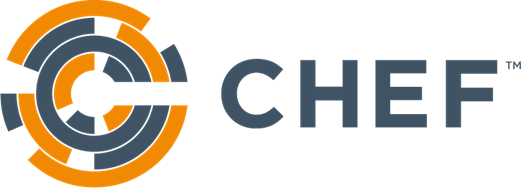
Chef is an infrastructure automation software with the support of which you can achieve speed, scale and consistency of your system. This tool uses a client-server architecture and is based on a Ruby DSL (domain-specific language). Chef presents the infrastructure as code, so users can quickly adapt to changing enterprise
needs. Chef is one of the best services among cloud automation tools.
Main features:
- Infrastructure automation
- Cloud automation
- Multiple cloud environments management
- Strong compliance and security management
- Documentation and support from an active community
- Stable and reliable for large-scale deployments
- One of the most flexible solutions for OS and middleware management
- Created for programmers
- Maintain high availability
Disadvantages:
- Initial setup is complicated
- Requires a steep learning curve
- Doesn’t support remote execution of commands
- Lacks push system (changes can’t be made immediately; they follow a specified schedule)
Pricing:
- Basic version: Free
- Standard Hosted Chef: $72 per node
- Chef Automate Version: $137 per node
7. Puppet
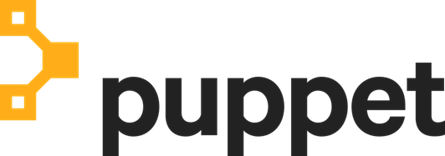
Puppet offers end-to-end visibility and control over your application delivery. As other infrastructure orchestration tools, it was created to automate tasks for sysadmins. Now they don’t have to spend ages configuring, provisioning and maintaining server operations. Puppet is built with Ruby and uses an agent/master architecture.
Main features:
- Enables teams to deliver changes quickly
- Automates provisioning and configuring
- Ensures consistency across development, test and production environment
- Provides visualization and reporting
- Code and node management
- Intuitive interface
- Strong compliance tools
- Community support for development tools and cookbooks
- Especially useful for large enterprises managing a heterogeneous infrastructure
- Decreases cycle time
Disadvantages:
- Can be difficult for new users unfamiliar with Ruby or Puppet DSL
- Lacks adequate error reporting capabilities
- Not quite good for scale deployments
- Doesn’t support remote execution of commands
- Lacks push system
Pricing:
- Trial version (up to 10 nodes): Free
- Standard pricing: starts at $120 per node
- Contact sales for more information
8. Ansible
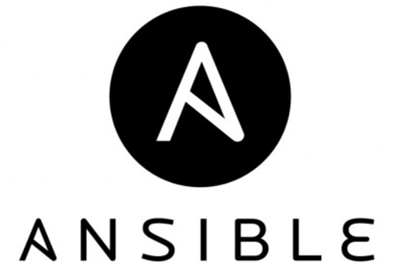
Ansible is one of the simplest DevOps tools for infrastructure automation. It is an agentless configuration management tool that is similar to Chef and Puppet. Ansible was created to simplify complex management tasks. It is used to push changes and re-configure newly deployed machines. Moreover, its ecosystem is great for writing custom apps. Ansible modules (playbooks) are written in YAML format. The platform is written in Python and allows users to script commands in YAML as an imperative programming paradigm.
Main features:
- Easy remote execution
- Low barrier to entry
- One of the best cloud provisioning tools
- Suitable for scalable environments
- Doesn’t require agents on every system
- Eliminates repetitive tasks and frees time for more strategic work
- Offers multiple push models
- Fairly easy to learn for new users
- Easy installation and initial setup
- Supports both push and pull models
- A high-security policy with SSH
Disadvantages:
- Increased focus on orchestration over configuration
- The syntax across scripting components (playbooks, templates) can vary
- Underdeveloped interface with limited features
Pricing:
- The Self-Support offering: starts at $5,000 per year
- The Premium version: goes for $14,000 per year (for 100 nodes each)
- Contact sales for more information
9. SaltStack

Among DevOps automation tools, SaltStack is in a good position. It is a Python-based configuration management tool for intelligent orchestration of the software-defined data center. SaltStack was designed to enable low-latency and high-speed communication for data collection and remote execution.
Main features:
- Orchestration and automation for clouds
- The code can be pushed to many nodes simultaneously
- The compilation of code and configuration is very fast
- Supports remote execution of commands
- The platform uses the push model for executing commands via SSH protocol
- Allows parallel execution of multiple commands encrypted via AES
- Offers both vertical and horizontal scaling
- A single master can manage multiple masters
- The platform supports both master-agent and decentralized, non-master models
- Effective for high scalability
- Easy to learn for new users
- Active support of the community
Disadvantages:
- Not good for operating systems other than Linux
- Limited capabilities of UI
- Documents are not well-managed and may be hard to review
- The platform is new and not entirely mature
Pricing:
- Contact sales for cost information
10. Monit

Monit is the simple “watchdog” for system monitoring and error recovery. It ensures that processes, programs and files are up and running appropriately. If a failure occurs, Monit surfaces the problem, restarts a process and implements solutions.
Main features:
- Easy to set up and configure
- Especially useful for multi-service architecture with hundreds of microservices
- Small utility
- Executes meaningful actions in error situation
Pricing: Free
11. Snort

Snort is an intrusion prevention DevOps tool. It is the most widely deployed security system in the world, with more than 500,000 registered users.
Main Features:
- Provides real-time traffic analysis and packet logging on IP networks
- Performs protocol analysis and content searching and matching
- Can be used to detect a variety of attacks and probes
- Detects buffer overflows, stealth port scans, CGI attacks, SMB probes, OS fingerprinting attempts, and other attacks and probes
Pricing: Free
12. JIRA Software

Agile DevOps teams use JIRA Software for issue planning and project tracking. This tool is especially useful for teams that want to ship early and often. A single instrument can help release great software in time.
Main features:
- Enables to create issues, plan sprints, distribute tasks across the team
- Enables to discuss and prioritize your work with the members in full context with complete visibility
- Provides an out-of-the-box workflow
- Enables you to create your own workflow
- Improves team performance
- Provides real-time, visual data
Pricing:
- Free demo version
- Cloud: Starts at $10 per month for 10 users
- Server: Starts at $10 per month for 10 users
- Data Center: Starts at $12,000 per month for 500 users
The Bottom Line
Different tools for DevOps present different ways to achieve common goals:
- To simplify and manage a large-scale infrastructure efficiently and with minimal effort from developers and operators;
- To reduce the complexity of resources and enhance the security level;
- To plan and organize cooperation within the development team in order to maximize productivity and make a profit.
To select the right DevOps solution that fits your enterprise, consider your needs, the tool’s features, capabilities, operational model and architecture, usability, support, and other technical and business aspects.
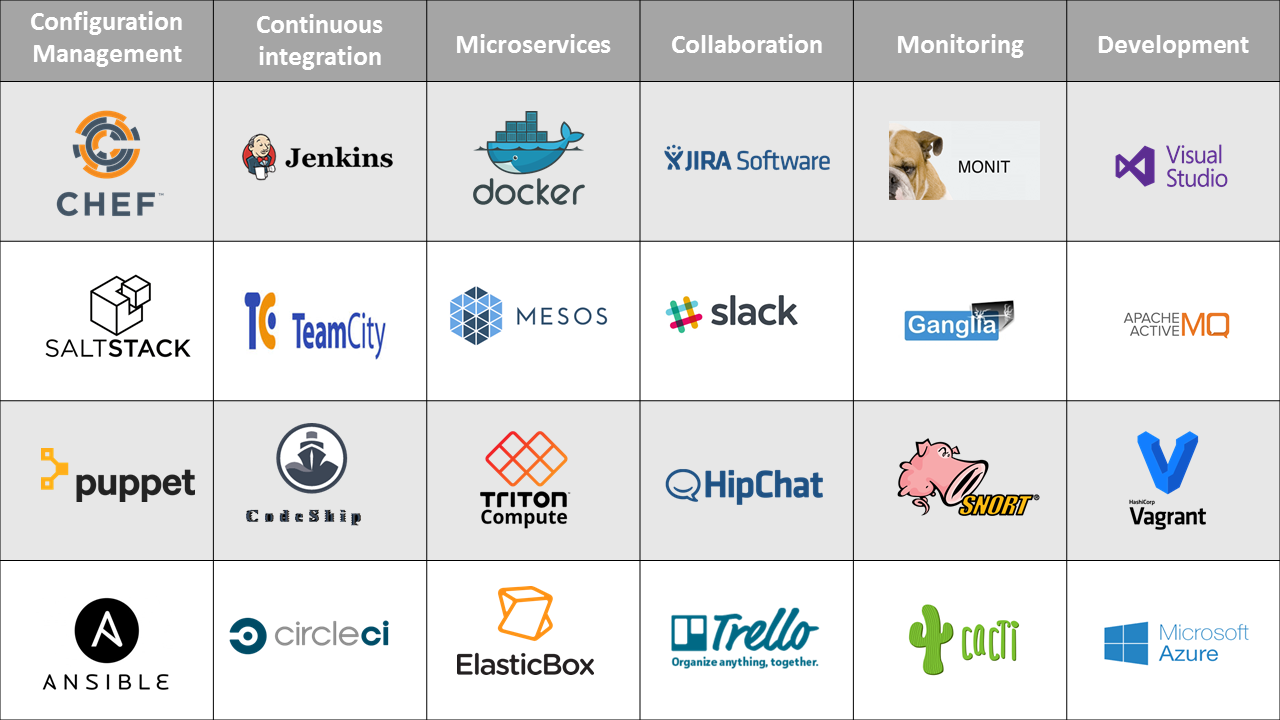



















 The Latest 15 Information Technology Trends in 2024
The Latest 15 Information Technology Trends in 2024 Top 10 Embedded Software Development Tools
Top 10 Embedded Software Development Tools IaaS vs. PaaS vs. SaaS: What’s the Difference?
IaaS vs. PaaS vs. SaaS: What’s the Difference? 10 Examples of Predictive Analytics
10 Examples of Predictive Analytics
![Web App Development Cost in 2025 [Key Price Factors]](https://www.sam-solutions.com/blog/wp-content/uploads/fly-images/31797/Web-App-Development-Cost-cover@2x-370x238.webp)










